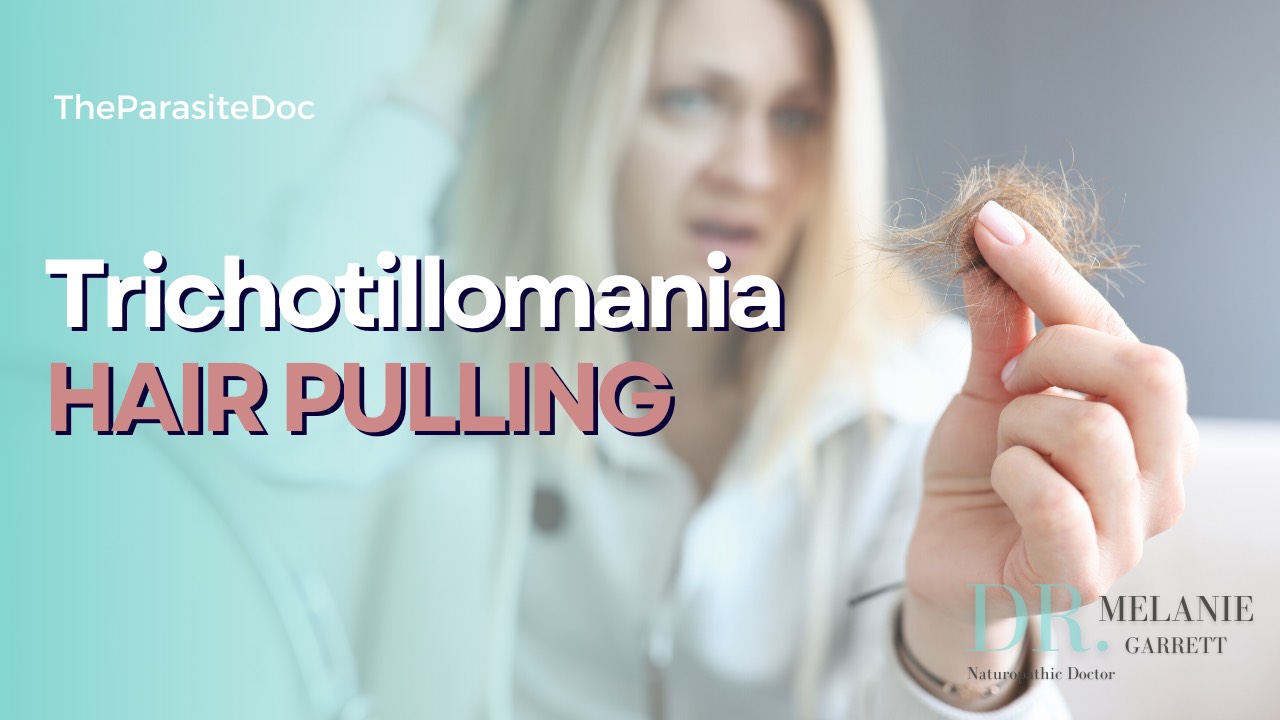Trichotillomania
What is Trichotillomania?
Trichotillomania is a psychological disorder characterized by an irresistible urge to pull out one's hair, leading to noticeable hair loss. It is classified as an obsessive-compulsive and related disorder in the Diagnostic and Statistical Manual of Mental Disorders (DSM-5). Trichotillomania is generally considered to be a complex condition with multiple factors contributing to its development and maintenance.
While the exact cause of trichotillomania is unknown, it is believed to result from a combination of genetic, environmental, and psychological factors. Some theories suggest that trichotillomania may be related to imbalances in brain chemicals like serotonin or dopamine, which are involved in regulating mood and behavior. Traumatic events, stress, anxiety, or other emotional difficulties may also contribute to the development or exacerbation of trichotillomania symptoms.

The connection between Trichotillomania and Parasites
Regarding the potential connection between trichotillomania and parasites, there is limited scientific evidence to support such a link. Trichotillomania is primarily considered a behavioral disorder rooted in psychological factors rather than a direct result of a parasitic infection.
However, it's important to note that some individuals with trichotillomania may experience sensations or beliefs related to parasites or insects crawling under their skin or in their hair follicles. These experiences, known as delusions of parasitosis or delusional infestation, are distinct from trichotillomania itself. Delusional infestation is a psychiatric condition characterized by a fixed, false belief of being infested with parasites, despite the absence of medical evidence.
The connection between NAC and Trichotillomania
N-acetylcysteine (NAC) has been investigated as a potential treatment for various psychiatric disorders, including trichotillomania. NAC is a precursor to the amino acid cysteine and has antioxidant and glutamate-modulating properties that may affect neurochemical processes implicated in trichotillomania.
Several studies have explored the effectiveness of NAC in the treatment of trichotillomania, although the research is still limited, and further investigation is warranted. Here are a few key studies:
Study 1:
Grant, J. E., Odlaug, B. L., & Kim, S. W. (2009). N-acetylcysteine, a glutamate modulator, in the treatment of trichotillomania: a double-blind, placebo-controlled study. Archives of General Psychiatry, 66(7), 756-763.
-
- This study conducted a 12-week, double-blind, placebo-controlled trial involving 50 participants with trichotillomania. The participants were randomly assigned to receive either NAC or placebo. The results showed that NAC was significantly more effective than placebo in reducing hair-pulling symptoms
Study 2:
Grant, J. E., & Chamberlain, S. R. (2016). N-acetylcysteine augmentation in treatment-resistant trichotillomania. Journal of Clinical Psychopharmacology, 36(6), 710-712.
- This study examined the use of NAC as an augmentation strategy in six individuals with treatment-resistant trichotillomania. All participants showed a significant reduction in hair-pulling symptoms after adding NAC to their existing treatment regimens.
Study 3:
Bloch, M. H., Panza, K. E., Grant, J. E., Pittenger, C., Leckman, J. F., & Nadeau, J. M. (2013). N-Acetylcysteine in the treatment of pediatric trichotillomania: a randomized, double-blind, placebo-controlled add-on trial. Journal of the American Academy of Child & Adolescent Psychiatry, 52(3), 231-240.
- This study focused on pediatric trichotillomania and examined the effectiveness of NAC as an add-on treatment. Forty-eight children and adolescents were randomly assigned to receive either NAC or placebo for 12 weeks. Although the results did not show a statistically significant difference between the NAC and placebo groups, there was a trend toward improvement in the NAC group.
These studies suggest that NAC may have potential as a treatment for trichotillomania, but more research is needed to establish its efficacy and optimal dosing. It's worth noting that individual responses to NAC may vary, and it is important to consult with a healthcare professional before starting any new treatment.
Exploring The Environmental Medicine Connection
Environmental Toxins
The hypothesis suggests that exposure to certain environmental toxins, such as heavy metals, pesticides, or other chemicals, may disrupt neurochemical processes in the brain, potentially increasing the risk of developing or triggering trichotillomania symptoms. It is postulated that these toxins could affect neurotransmitters, such as dopamine or serotonin, which are implicated in the regulation of mood, behavior, and impulse control.